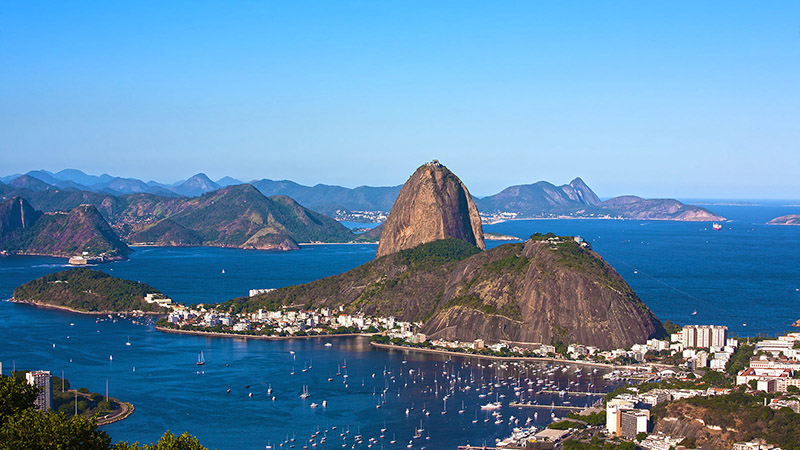Cities are both a major cause of carbon emissions and the most affected by them − at the same time, the villain and victim.
And that is precisely why they should have a place at the table of future climate change negotiations, according to a special report presented by the Brazilian Panel on Climate Change (BPCC) at the UN’s COP22 climate conference, which ended yesterday in Marrakech, Morocco.
Although most environmental stories from Brazil are about the Amazon and the rainforest, Brazil has been rapidly transforming itself into a country where the majority of the 210 million population live in urban settlements. By 2050, a staggering 90% will be city dwellers.
The report on climate policies and the impacts of climate change on urban infrastructure was presented by Suzana Khan, president of the BPCC’s scientific committee.
She said: “Although they are not present at climate change negotiations, it is in the cities that most impacts will occur. They are the ones who will have to adapt because they are where most of the world’s population lives.”
196 countries to Trump – UN must tackle climate change: https://t.co/Eyj1C7eoWy #COP22 pic.twitter.com/dHmFY5Jqaa
— Climate Home News (@ClimateHome) November 18, 2016
Khan pointed out that it is the cities that consume half the world’s energy, so they also have an important role in the mitigation of greenhouse gas emissions.
Urbanisation is a global trend. In 1900, only 13% of the world’s population lived in cities. Today, it is over half, and by 2050 it will be two-thirds − or between 5.6 and 7.1 billion people, according to the UN’s 2014 report on world urbanisation prospects.
The biggest increase is in developing countries, where more and more people live in unplanned urban settlements.
Yet in spite of the fact that it is the urban population that is most affected by climate change impacts, cities as such have not been represented independently at the talks. They were not present at the Paris Agreement negotiations last December, nor were they present at the COP 22 talks in Marrakech.
The BPCC report says that there is already a high concentration of people in Brazil living in areas of risk that have been occupied without formal permission.
More than 3 million homes are located in 6,329 slums and shantytowns. Less than half of the population have access to sewage systems, and only 40% of wastewater is treated.
The cities have already begun to suffer the impacts of climate change, with an increase in heatwaves and a higher frequency and intensity of extreme events, such as flooding and droughts.
Khan said: “Climate change intensifies and amplifies the problems that are often already present in a city, such as flooding, mudslides, and a greater incidence of diseases, including the mosquito-transmitted viruses dengue, zika and chikungunya.
“Added to these problems are new challenges such as the lack of water caused by prolonged drought, more frequent heatwaves, and rises in sea levels.”
Rainfall could diminish by 22% in the Northeast region of Brazil by 2100. But, in contrast, 37% of Brazilian towns and cities were affected by flooding between 2008 and 2012.
California is looking into joining UN climate talks if the US quits: https://t.co/3jXDeD7jR1 pic.twitter.com/NrbLB78mvN
— Climate Home News (@ClimateHome) November 18, 2016
The report says that cities in coastal areas − 12 of Brazil’s main cities are on the sea − can expect a rise in sea levels and storms, affecting inhabitants, infrastructure and ecosystems.
The impact on water supplies will also be considerable, as urban areas are the second biggest consumers of water in Brazil, after irrigation systems.
Extreme events such as intense rainfall in a short period of time result in more residues and detritus entering the water supply, and the lack of drainage worsens the situation, leading to serious hazards for drinking water purity.
And prolonged droughts lead to a loss of quality in the water supply because polluting elements are not washed away.
As a result of these problems, combined with the effects of larger populations, the report foresees that by 2025 the demand for clean water will increase by 28% from the level in 2005, demanding investments of around US$ 7 billion.
Gloomy forecasts
Faced with such gloomy forecasts, are there any potential solutions?
Suggestions include preserving any fragments of forest and vegetation that remain in cities, creating linear parks along streams to minimise flood impact, creating natural and artificial barriers such as dams, marshlands and wetlands as buffers to contain rising seas, and altering construction regulations to reduce energy consumption for heating and cooling buildings.
There must be a much greater efficiency in the use and re-use of water, with improved water storage capacity. Hydrological basins must be recovered and reforested.
In view of the cities’ role in climate change, Khan believes not only that they should “be integrated into Brazil’s action plan for reaching the Paris targets”, but should have a place at negotiations alongside national governments.
Recent experiences show that, without joined-up thinking between the various levels of government, progress will be slow.
In 2009, São Paulo and Rio de Janeiro − Brazil’s two largest cities − cancelled their municipal plans to fight climate change, claiming they depended on national actions such as incentives for public transport or regulations for energy generation.
This article was produced by the Climate News Network
